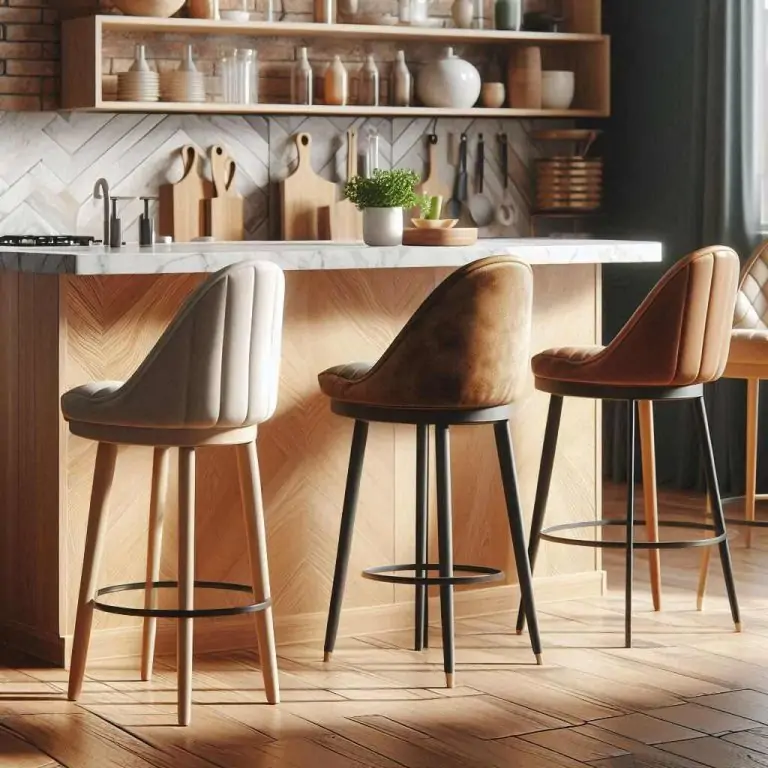Horizontal Fence Ideas for Your Home
Are you looking to update your home’s exterior? Consider adding a horizontal fence for a modern and sophisticated look! Unlike traditional vertical fences, horizontal fences offer a contemporary and open feel. With a variety of materials and designs to choose from, the possibilities are endless for incorporating a horizontal fence into your home’s aesthetic.
Get inspired with these horizontal fence ideas for your next home improvement project. Let’s transform your space!

Wood Slat Fence
One of the most popular options for horizontal fencing is the wood slat fence. This design provides a sleek and simple look, perfect for those wanting a modern touch. The slats can be placed close together for privacy or spaced out for a more open feel. Wood slat fences can be made from various types of wood, such as cedar, pine, and redwood, each offering unique grain and color to match your home’s aesthetic.
Metal Frame Fence
For a more industrial look, consider a horizontal fence with a metal frame. This style adds an edgy element to your home’s exterior and can be paired with different materials like wood or vinyl for the panels. Metal frame fences are durable and low maintenance, making them a practical choice. They can withstand harsh weather conditions and require minimal upkeep. Adding climbing plants or vines can soften the look and add a touch of greenery.
Metal and Wood Combo
Why choose between metal or wood when you can have both? A combination of these two materials can create a unique and visually appealing fence. The contrast between the warm tones of wood and the coolness of metal adds dimension to your home’s exterior. This style allows for more customization with different patterns and designs.
Brick Fence
Looking for something more traditional yet still modern? A brick fence with horizontal slats is an excellent option. The combination of brick and wood creates a classic look with a modern twist. Brick fences offer more security and privacy while maintaining an open feel. The horizontal slats break up the solid brick, creating a visually interesting design.
Bamboo Fence
For an eco-friendly option, consider a bamboo fence. This sustainable material is lightweight and durable, making it ideal for fencing. Bamboo also has natural water-resistant properties, making it suitable for outdoor use. Bamboo fences come in various styles, including horizontal slats, giving you the freedom to choose the one that best fits your home’s aesthetic. They are also easy to install and maintain, making them a hassle-free option.
Stone Fence
For a unique and luxurious look, consider a stone fence with horizontal accents. The combination of natural stone with wood or metal creates an elegant and high-end feel to your home’s exterior. Stone fences are incredibly durable and long-lasting, providing excellent sound insulation, perfect for those living in noisy areas.
Concrete Panels
For a contemporary and minimalist look, consider using concrete panels for your horizontal fence. This option provides a clean and sleek appearance that can be customized with different textures or colors. Concrete fences are durable and require little maintenance, ideal for adding privacy while maintaining an open feel.
Gabion Wall
A Gabion wall is a unique fence idea that merges functionality and style. It’s essentially a wirework container filled with rocks, concrete, or glass. Gabion walls are sturdy, weather-resistant, and offer an interesting visual texture. When combined with horizontal wood panels, it results in a compelling juxtaposition of rugged natural elements and smooth modern design. This style suits a variety of home aesthetics, from rustic to contemporary, and encourages the use of local, natural materials.
Painted Fence
If you’re looking to add a pop of color to your home’s exterior, consider a painted horizontal fence. This option allows you to explore your creativity with your favorite colors or tones that match your home’s aesthetic. A painted fence can transform your outdoor area into a vibrant and lively space, becoming the perfect backdrop for your garden or patio area. Whether you opt for a bold, bright color or a more subdued tone, a painted fence can significantly impact your home’s curb appeal.
Horizontal Vinyl Fencing
For a durable and economical option, consider horizontal vinyl fencing. These fences are resistant to the elements and require minimal maintenance, making them an attractive choice. Available in various colors and finishes, vinyl fences can mimic the look of wood or metal, achieving your desired aesthetic without the associated upkeep. The horizontal arrangement of the panels adds a modern twist to this common fencing option, enhancing your outdoor space.
Slatted Metal Fence
For a sleek and contemporary look, consider a slatted metal fence. This fencing style features thin horizontal strips of metal tightly spaced together, creating a solid yet open design. Slatted metal fences come in various colors, adding sophistication to your property. They provide excellent privacy while allowing natural light and air to flow through.
Living Fence
For a unique and eco-friendly option, consider a living fence. This type of fence is created by growing plants on a wire or lattice framework, resulting in an organic and ever-changing fence. Choose from various climbing vines, shrubs, or flowers to create the perfect living fence for your home. It not only provides privacy but also attracts wildlife and adds a touch of nature to your outdoor space.
Get Inspired by These Horizontal Fence Ideas
Horizontal fences offer a modern and stylish alternative to traditional vertical fences. Get creative and choose the fence style that best fits your taste and complements your home’s aesthetic. With these horizontal fence ideas, you can transform your outdoor space into a stunning and welcoming oasis. So why wait? Start planning your horizontal fence project today!
Is this article helpful? Keep reading our blog for more.
FAQs on Horizontal Fence Ideas for Your Home
1. What are the benefits of a horizontal fence compared to a vertical fence?
Horizontal fences offer a modern and sleek appearance, creating a more contemporary and open feel. They can make small spaces look larger and provide a unique aesthetic that stands out from traditional vertical fences.
2. What materials can be used for horizontal fences?
Materials commonly used for horizontal fences include wood (such as cedar, pine, and redwood), metal (including steel and aluminum), vinyl, bamboo, concrete panels, and stone. You can also combine materials, such as wood and metal, to create a custom look.
3. How do I choose the right material for my horizontal fence?
Consider factors such as your budget, desired aesthetic, maintenance requirements, and the climate in your area. For instance, wood offers a natural look but requires more maintenance, while metal and vinyl are more durable and low-maintenance.
4. How much does it cost to install a horizontal fence?
The cost of installing a horizontal fence varies depending on the materials used, the size of the area to be fenced, and labor costs in your region. On average, prices can range from $15 to $50 per linear foot. Obtaining quotes from multiple contractors can help you get a better idea of the expected costs.
5. Are horizontal fences as durable as vertical fences?
Yes, horizontal fences can be just as durable as vertical fences if they are constructed with quality materials and proper installation techniques. The durability depends on the materials used and how well the fence is maintained.
6. How can I maintain my horizontal fence?
Maintenance varies depending on the material. Wood fences may need periodic staining or sealing to protect against weathering, while metal fences may require rust prevention treatments. Vinyl and concrete fences typically require minimal maintenance, often just occasional cleaning with soap and water.
7. Can I install a horizontal fence myself, or should I hire a professional?
While it is possible to install a horizontal fence yourself if you have the necessary skills and tools, hiring a professional ensures proper installation and longevity. Professionals can also help with design and material selection to achieve the best results.
8. How do I ensure privacy with a horizontal fence?
To ensure privacy, you can place the slats close together or opt for solid panels. Adding features like climbing plants or incorporating a lattice design at the top can also enhance privacy while adding visual interest.
9. Can a horizontal fence be used on a sloped yard?
Yes, horizontal fences can be installed on a sloped yard by using the stepped method or the racked (or parallel) method. The stepped method involves creating a series of steps along the slope, while the racked method involves angling the fence panels to follow the contour of the land.
10. How do I choose the right height for my horizontal fence?
The height of your fence should be based on your needs for privacy, security, and local building codes. Common heights range from 4 to 8 feet. Check with your local authorities for any height restrictions or regulations in your area.
11. Are horizontal fences suitable for all climates?
Horizontal fences can be suitable for all climates if the right materials are used. For example, metal and vinyl fences are more resistant to extreme weather conditions, while wood may require additional treatment in areas with high humidity or heavy rainfall.
12. Can I add decorative elements to my horizontal fence?
Absolutely! You can enhance your horizontal fence with various decorative elements such as lighting, decorative post caps, integrated planters, and trellises. These additions can personalize your fence and improve its functionality and aesthetic appeal.
13. What are some design ideas for a horizontal fence?
Design ideas include using different widths of slats, combining materials (such as wood and metal), incorporating built-in planters or seating, painting or staining the wood in different colors, or adding a decorative top rail or lattice.
14. How do I start planning my horizontal fence project?
Start by defining your goals and budget. Consider the purpose of the fence (privacy, security, decoration), choose your preferred materials, and research design ideas. Measure the area to be fenced and consult with a professional contractor if needed to get accurate quotes and ensure proper installation.
15. What are some common mistakes to avoid when installing a horizontal fence?
Common mistakes include not checking local building codes, inadequate post installation (which can affect stability), poor material choices for your climate, and improper spacing of the slats. It’s also important to consider drainage and soil conditions to prevent fence damage over time.






